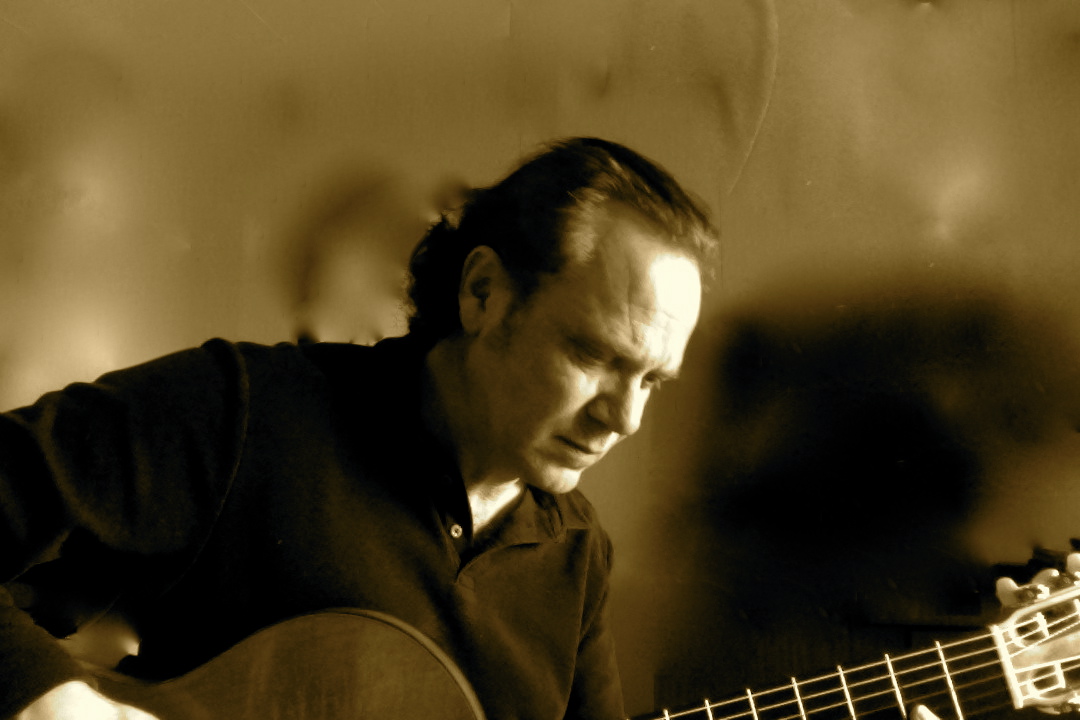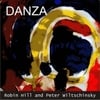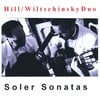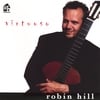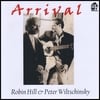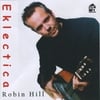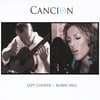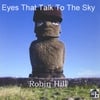Often we are asked about Robin's musical influences, and as a performer and a composer, are there particular pieces of music that helped shape the musician he is today?
Generally people seem interested in the music that has inspired a musician, especially one who unusually is equally at home on both classical & electric guitar...
So, I thought I'd address this here today.
A commonly quoted sentence in our house is, 'Nothing is composed in a vacuum,' and this became my starting point.
I have in fact touched on this before in the post, 'Miles Davis, Stravinsky, Herrmann and The Beatles - A Musical Connection' but felt it worthy of revisiting.
At the time of writing Robin had just left on a two week trip, so he obliged by sending me an email containing the names of his major musical influences from the 1930's to the 1960's.
Miles Davis featured once again, not only as Charlie Parker's sideman but also as bandleader and pioneer of 'cool jazz'.
Given that Robin is a guitarist, it won't come as a surprise that the album, 'Sketches of Spain', was high on his list with its highly original arrangement by Gil Evans of the Adagio from Rodrigo's Concierto de Aranjuez.
Davis thought the melody was so strong that, 'The softer you play it, the stronger it gets,' and although there were critics, I feel it is an excellent example of different genres of music creating a most sublime synergy.
Then there's Benny Goodman.
A jazz clarinetist and band leader with the facility to play anything from swing jazz to Mozart concertos. In fact, Bela Bartok, one of the most important composers of the 20th century, actually composed a piece for Goodman, 'Contrastes'. Again showing the interaction and inter relation of many musical styles.
Two albums by the American bandleader, double bassist and composer, Charlie Mingus, also got a mention. 'Blues & Roots', recorded in 1959 and released in 1960, Mingus revisits his early musical experiences, mainly the blues, gospel and New Orleans Jazz.
It's reported that the recording sessions were rather disorganised but the result is that each track has a loose and relaxed feel.
The second album, 'Mingus Ah Um', also recorded in 1959 has had such an impact on the world that it was one of only fifty recordings added to the Recording Registry in 2003. An amazing album which can't help but draw the listener into the mood. Particularly the track, 'Better Git it in Your Soul', which, especially if listened to with eyes closed, paints a vivid and exciting portrait of New York City in the late 1950s..
Before we leave the jazz scene, which was so seminal in this era, one has to mention Django Reinhardt, particularly if examining the musical influences and inspirations of a guitarist.
Reinhardt was one of the first major European jazz musicians. The fact that he could only use the first and middle fingers of his left hand (due to injury in a fire at the age of 18) didn't hinder him. He simply invented a new technique of playing which has become a tradition in French gypsy culture.
One of his most memorable and enduring musical collaborations was with Stephane Grappelli, an association which produced not only great music but also some amusing episodes, one of which I wrote about here, 'Django Reinhardt, Stephane Grappelli & the Revolving Stage'.
It's telling that many years after these musicians were performing, Robin was, and still is, influenced by their music.
Whilst he may have started out in the field of classical music, one influences the other, and it's no coincidence that some time later he was recording his own jazz quartet, Eklectica', you can read about them here in, 'Robin Hill Plays Claude Bolling's 'Concerto for Classic Guitar and Jazz Piano Trio'.
But jazz wasn't his only influence, no classical guitarist forms a career without being hugely influenced by the presence of Andres Segovia, whose own career spanned all the decades we are looking at and more besides.
In fact the blog post, 'Hill/Wiltschinsky Guitar Duo Pay Homage to Andres Segovia', describes how the duo had the tremendous honour of being asked to perform a special concert in memory of Segovia in the Sistine Theatre, Rome.
Another highly influential and original artist and composer is George Gershwin, an American composer of both popular and classical music with a huge back catalogue including, 'An American in Paris', 'Rhapsody in Blue' and 'Porgy and Bess'.
His ability to cross genres is truly special and recognised by musicians in all camps. One of his sincerest admirers being Maurice Ravel. His two piano concertos are influenced by Gershwin and, in turn, much of Gershwin's orchestral work contains distant echoes of Ravel. Both of these composers had imaginatively captured the zeitgeist of their epoch in different ways which were mutually inspirational.
Again, from Robin's perspective all the above can be heard in some of his concerti. Particularly, 'Concerto Primavera - Robin Hill', and 'Arrival on iTunes and Eternal Dance-Robin Hill'.
However, there is a whole other side to Robin's musicianship and one that is quite unusual for classically trained musicians.
He is also known for his electric guitar playing and has been in various bands over the years, starting at the tender age of 12, and later performing with established bands such as Jethro Tull and Deep Purple, as a session guitarist with too many artists to mention here and his own bands, Hooper, Spring and Force 10.
He had no hesitation in listing the bands that had influenced him in his youth and completed his early training in musical styles.
The Beatles had to be there, right from, 'With The Beatles' to 'Sergeant Pepper', Frank Zappa with, 'Hot Rats, Jimi Hendrix with practically every note he played, The Beach Boys, particularly the track, 'Good Vibrations' and The Kinks, 'Waterloo Sunset' and ‘You Really Got Me’…which, interestingly features Deep Purple’s Jon Lord on piano.
The interesting part of this musical jigsaw is that all the different styles I have been looking at are still prevalent in Robin's life today. He regularly listens to them all, and many, many more and their endurance shows the quality of their musical history.
He continues to look out for, and listen to, new music and old and still creates his own.
Currently he has returned to his band roots and is working on an electric rock/blues style album.
Two of the tracks can already be heard, 'Illegal Download Blues & 38459', and having read the history, you may well see some of the above influences shining through.
As I said at the beginning, nothing is composed in a vacuum. Every musician listens, learns and incorporates this knowledge into their own music, whether original compositions or interpretations.
This is why it is so important not to be bound by one style alone. Take a chance and investigate the unknown.
We have always felt it essential to expose our children to as many different types of music as possible. Actually, they didn't have an option, music has been available to them since before they were actually born.
But it is an essential part of learning and one we take seriously. Children are the next generations of musicians and it's our role to ensure they are inspired. In fact, 'Inspire Young Minds with Music'.
Reviews
'As always, it was sheer pleasure to observe Robin Hill's remarkable fluent technique: everything looks easy when he plays it.' Colin Cooper- Classical Guitar Magazine -----
'Wonderful for their (Hill & Wiltschinsky) precision, touch and clarity of sound... refined virtuosity, the achievement of a long interpretive process.' Il Giornale D'Italia (Rome) -----
'I loved your CD and thought your technique and performance were fabulous...' Rick Wakeman
Friday, June 28, 2013
A Little Nostalgia & some Musical Inspiration - Robin Hill
Subscribe to:
Posts (Atom)
